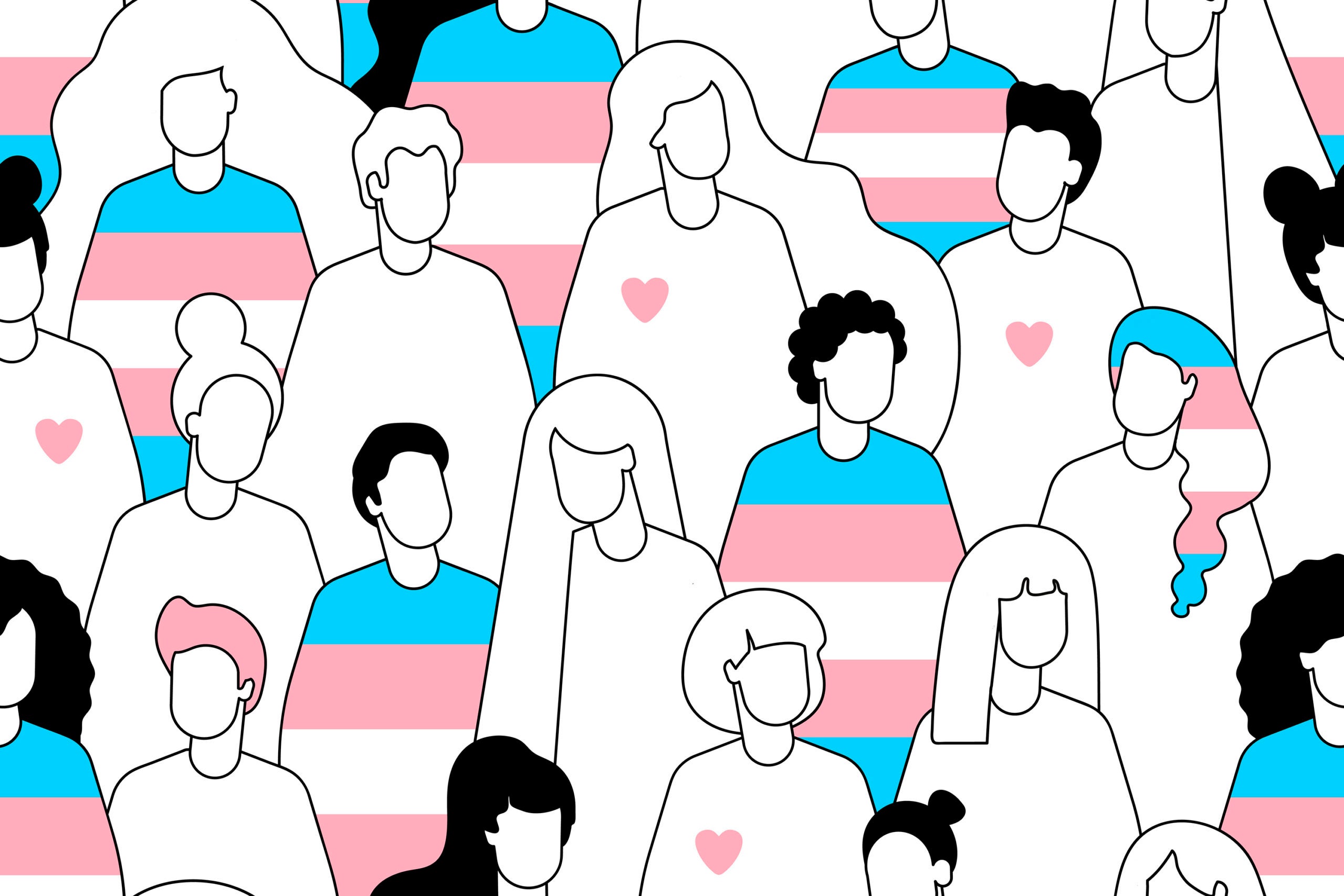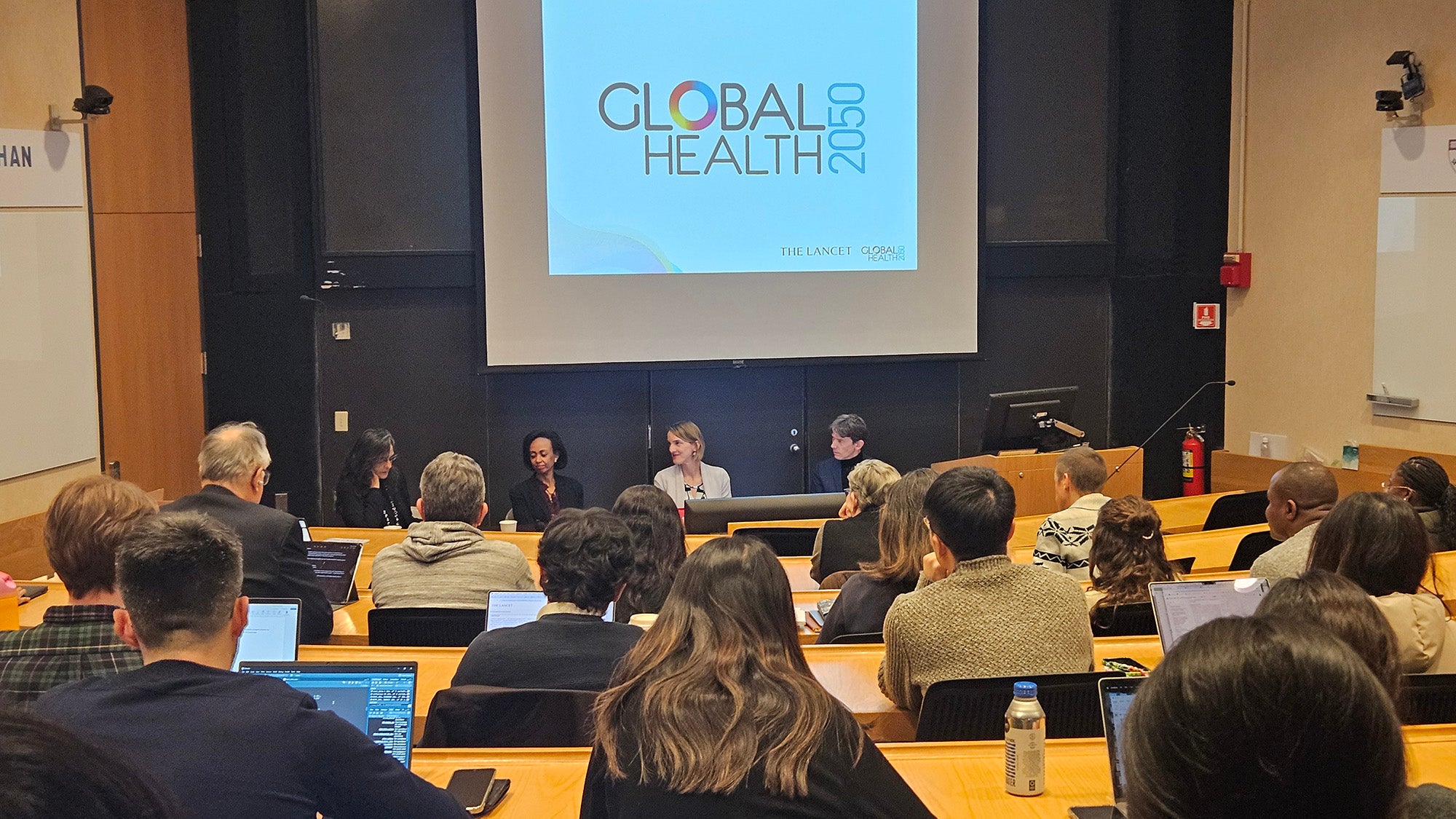The Connected Crisis

How the COVID-19 pandemic has inspired new research directions across the School
For most of this year, America’s attention has been riveted by the devastation of COVID-19—hundreds of thousands dead, millions sick, and millions more unemployed. But a calamity of this magnitude doesn’t just destroy; it also reveals.
The unfolding disaster has exposed the vulnerabilities created by America’s chronic neglect of public health investment and preparation. The United States spends about $3.6 trillion annually on health, but devotes less than 3 percent of that total to public health and prevention—and even that sliver has been shrinking for decades, according to a 2020 report by the nonprofit advocacy organization Trust for America’s Health. The pandemic has also laid bare the inequities of a society in which some people can afford to stay home from work when sick, shop online when necessary, and feed their children without school-provided meals, but tens of millions cannot. While much of the COVID-19 media coverage has focused on the critical work of epidemiologic modeling, tracking infection hot spots, and the quest for therapeutics and vaccines, the pandemic’s fallout highlights the myriad conditions that shape public health—from hunger to racism to environmental degradation—that must be part of a comprehensive response.
A few years ago, when he was the assistant secretary for health in the Obama administration’s Department of Health and Human Services, Howard Koh, now the Harvey V. Fineberg Professor of the Practice of Public Health Leadership at the Harvard T.H. Chan School of Public Health and Harvard Kennedy School, observed that spending money on disease prevention has always been a tough sell, because “when prevention works, nothing happens.” Today, Harvard Chan School researchers are asking whether the global disaster of COVID-19 has convinced enough skeptics about the importance of prevention and preparation—enough to revive support not just for infectious diseases but across a broad range of fields as well.
“This is a shining moment for the value of public health in the United States,” says Aaron Bernstein, interim director of the Harvard Chan School’s Center for Climate, Health, and the Global Environment. “So many people at our school have worked tirelessly and effectively to get us all back on track and keep this from happening again. Their contributions show how sustained investments in public health from our government, foundations, and others can pay huge dividends when health crises emerge.”
For any such clarity to endure beyond the current crisis, it will take a deeper shift in public consciousness—a realization “of just how interconnected we are, globally, as humanity,” says Bronwyn MacInnis, director of pathogen genomic surveillance at the Broad Institute and a visiting scientist at the School. How have Harvard Chan School researchers outside the realm of infectious disease responded to the pandemic? Has the crisis shifted their scientific focus? Do they fear public awareness and funding support for their piece of the public health puzzle will fade as the emergency recedes? How can they leverage this moment of awareness to rebuild a healthier and more resilient society? Several School faculty shared their thoughts on these and other questions.
HEALING THE HURT
KARESTAN CHASE KOENEN
At the start of spring semester in January, Karestan Chase Koenen, a professor of psychiatric epidemiology, received an email from a student advisee, a psychiatrist from China earning a master’s degree in public health. The student apologized. He would miss their first meeting, because he had just returned to the States from China and was self-quarantining. When he did eventually sit down in Koenen’s office, he burst into tears.
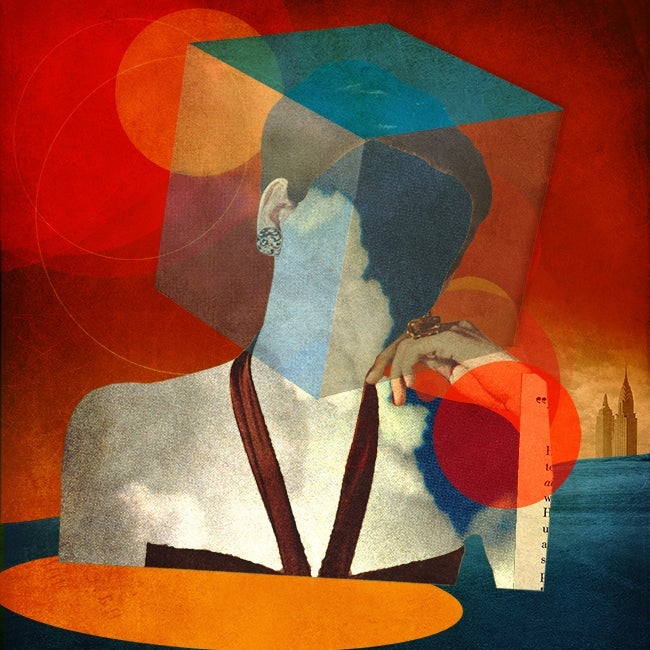
“He felt guilty that he was not in China,” says Koenen. “And he was hearing from friends—doctors on the front lines—about what they were seeing in Wuhan.”
What his colleagues had witnessed wasn’t just the physical toll of COVID-19 but also the psychiatric one. Since that conversation, Koenen has immersed herself in the mental health impacts of the pandemic, including people’s anxiety about getting sick or having a loved one contract a disease with no proven treatments, the grief and trauma of so many deaths, chronic stress from lost wages and other economic fallout, and the loneliness of social isolation.
When the lockdowns hit, Koenen’s research focus shifted. She shelved a multisite study into the genetics of schizophrenia, because saliva for DNA had to be collected in person. Meanwhile, she added a COVID-19–focused survey to her existing study of stress and cognition in the Nurses’ Health Study II, a decades-old longitudinal research cohort of more than 100,000 female nurses. The survey—which asked about COVID-19 exposure, access to personal protective equipment (PPE), coping strategies, health behaviors, and mental well-being—was also incorporated into the all-male Health Professionals Follow-Up Study.
Unlike most disaster research, which starts studying victims after their trauma, these two Harvard-based longitudinal studies have followed people for decades. Koenen hopes that these questions, added to the existing survey of stress and cognition, will help identify factors that contribute to mental health vulnerability and resilience over the long term.
“I think this is a chance to really help us understand why, just like with the disease itself, some people seem to be doing better in terms of their mental health,” she says. How much is genetic, or behavioral, or woven into a person’s life history or social context? “That’s always been a question people are interested in, but I think it’s even more important given that my infectious-disease colleagues say that this kind of pandemic will happen again,” she says.
Shortly after her conversation with the Chinese psychiatrist, Koenen emailed her stress and mental health research group, proposing a meeting to discuss what might happen if a full-blown pandemic hit the United States. She reserved a small room on campus but soon discovered that her email had been inadvertently forwarded throughout the Harvard community. Suddenly, more than 100 people were eager to attend.
So Koenen took the meeting virtual and asked her group to pull together all the research they could find on the mental health consequences of epidemics. “We did it more like an impromptu webinar,” she says. It was held on March 11, the day that the World Health Organization officially deemed COVID-19 a pandemic. The webinar grew into a weekly COVID-19 Mental Health Forum, focused on practical topics such as supporting worried or lonely kids, mindfulness and other stress-relief strategies, and dealing with grief and loss.
The bereavement that accompanies this pandemic goes beyond the staggering death toll, notes Koenen. There’s also the loss of life’s usual touchstones, such as graduations, weddings, and family reunions. In the midst of these losses, the virus has also robbed people of a powerful coping mechanism: being together.
Koenen felt this lack of social support keenly when her sister’s father-in-law and his wife both died of COVID-19 in New York City. The family said their goodbyes virtually. The normal gatherings of remembrance, love, and support were impossible. “We haven’t had a memorial, because they don’t really want to do it on Zoom,” says Koenen. “They want to do something in person, when they can.”
While the day will come when we are no longer risking lives by gathering together, and COVID-19 will eventually fade from the headlines, the mental health impacts will reverberate for many years to come, from post-traumatic stress disorder to the disproportionate devastation among communities of color and lower-income individuals to the fact that millions who were already living with mental health challenges such as depression and addiction were unable to access the support they needed during months of lockdowns.
“When this is over, I think it’s going to be on us—public health people—to communicate how this awareness should translate into policies and funding,” says Koenen. “We need to give people an action plan. People are hungry for that now. The pandemic has raised awareness of something that people in public health have always known: that we’re all connected, and that our health is interdependent.”
“THE PANDEMIC HAS RAISED AWARENESS OF SOMETHING THAT PEOPLE IN PUBLIC HEALTH HAVE ALWAYS KNOWN: THAT WE’RE ALL CONNECTED, AND THAT OUR HEALTH IS INTERDEPENDENT.” —KARESTAN CHASE KOENEN, PROFESSOR OF PSYCHIATRIC EPIDEMIOLOGY
STOPPING HUMAN ENCROACHMENT ON THE WILD
AARON BERNSTEIN
Early one March morning, Aaron Bernstein, a pediatrician at Boston Children’s Hospital, donned a mask, face shield, gown, and gloves before meeting his first suspected case of COVID-19. The patient was a 7-year-old girl, who edged closer to her mom and silently gripped a stuffed animal as Bernstein approached.
After joking about his “alien suit” and his “missing nose,” Bernstein put the girl at ease enough to examine her. “I realized that as I laid hands on her, I was really connecting myself with a bat living in Asia,” he recalls, referring to a likely origin of SARS-CoV-2, the virus that causes COVID-19.
For Bernstein, interim director of the Harvard Chan School’s Center for Climate, Health, and the Global Environment, the tragedy of the pandemic is compounded by the fact that it wasn’t a surprise.
 “We saw this coming,” he says. In fact, Bernstein had co-authored and edited the book Sustaining Life, which catalogued the dangers to human health posed by habitat destruction and the loss of biodiversity—including risks of emerging infectious diseases. The book was published in 2008, and the research in it stretched back years before that, making the public health case for slowing our collective plundering of nature.
“We saw this coming,” he says. In fact, Bernstein had co-authored and edited the book Sustaining Life, which catalogued the dangers to human health posed by habitat destruction and the loss of biodiversity—including risks of emerging infectious diseases. The book was published in 2008, and the research in it stretched back years before that, making the public health case for slowing our collective plundering of nature.
Put simply, continued human encroachment on these wild areas raises the chances of pathogens finding a human host—as they have in a number of outbreaks, including severe acute respiratory syndrome (SARS), Middle East respiratory syndrome, and Ebola.
“We know we can prevent disease spilling over from a bat to a human. The question is: ‘Will we?’” says Bernstein, who has called for a deeper, primary-prevention effort to thwart future outbreaks through ambitious investments in protecting a healthy biosphere.
“Climate change and habitat loss are the root causes of infectious-disease outbreaks,” he says. “The virus came about because of such things as hunting of animals for traditional medicine or bushmeat, illegal logging, and deforestation for monoculture crops. I expect that because of COVID-19, we are going to invest heavily in better vaccine development platforms, diagnostic tests, and other measures to prepare for the next infectious epidemic. As important as these investments are, I have to wonder whether we shouldn’t focus more on preventing pathogens from emerging in the first place, especially when these investments can improve health outcomes in other ways at the same time.”
FEEDING THE HUNGRY
SARA BLEICH
On the morning of March 13, Sara Bleich, professor of public health policy, was standing in line at Target with her two young daughters. It was the first official day of closed schools for their Brookline, Massachusetts, district, and Bleich was buying a few of the girls’ favorite snacks to last through what was then forecast to be two weeks of remote learning.
Chatting with the cashier, Bleich learned that Boston Public Schools would be shutting down for at least six weeks.
“My first thought was, ‘How are we going to feed all those children?’” Bleich recalls, referring to the more than three-quarters of the 54,000 students attending Boston schools who qualify for free or reduced-price school breakfasts and lunches. (The district would ultimately set up food pickup sites around the city.)
“That’s when it occurred to me that we had to think about the implications of nutrition during the school closures,” Bleich says.
For the past year, Bleich and colleagues had been working on a paper outlining ways to strengthen the public health impact of SNAP (Supplemental Nutrition Assistance Program, formerly known as food stamps). With a budget of $68 billion, SNAP is by far the largest federal nutrition safety-net program, helping some 40 million Americans afford food each month.
“The need to increase the public health impact of SNAP didn’t change,” says Bleich. “What did change is the relevance of the work.”
Bleich launched a new line of research within her SNAP portfolio to address recent changes to the program. Just before the emergence of the COVID-19 pandemic, only a handful of states permitted online use of SNAP. But when the nation’s governors started closing businesses and issuing stay-at-home orders, the number of states allowing online SNAP purchases skyrocketed to 40, as of July 1. This change is an important opportunity for SNAP participants, but it is unclear how well it is being communicated. Bleich’s team is looking into the quality and content of this communication for each state.
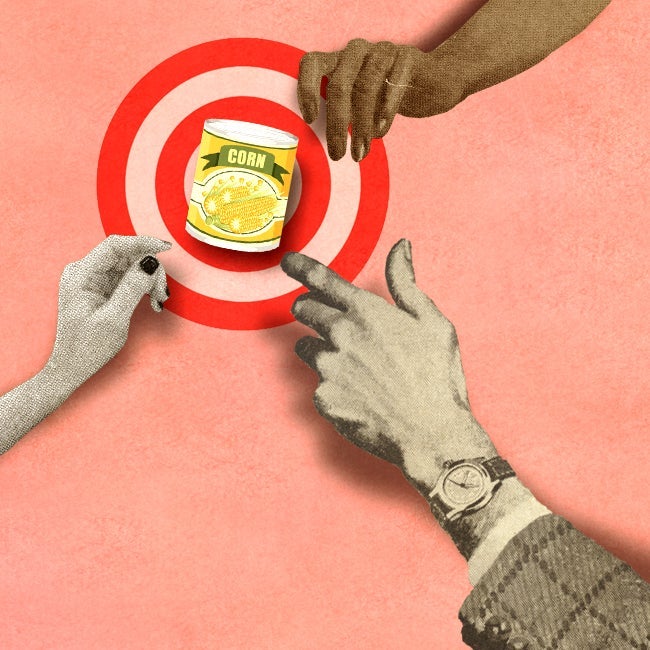 Going into the crisis, about 11 percent of Americans were considered “food insecure” by the U.S. Department of Agriculture (USDA). Put simply, they lack reliable access to nutritious food. As months of double-digit unemployment dragged on, more and more people required SNAP benefits for the first time. According to the Household Pulse Survey conducted weekly by the Census Bureau, by the end of July the number of households reporting that they sometimes or often didn’t have enough to eat rose by nearly 7 million, or about 30 percent above the pre-COVID-19 baseline.
Going into the crisis, about 11 percent of Americans were considered “food insecure” by the U.S. Department of Agriculture (USDA). Put simply, they lack reliable access to nutritious food. As months of double-digit unemployment dragged on, more and more people required SNAP benefits for the first time. According to the Household Pulse Survey conducted weekly by the Census Bureau, by the end of July the number of households reporting that they sometimes or often didn’t have enough to eat rose by nearly 7 million, or about 30 percent above the pre-COVID-19 baseline.
America’s growing hunger challenge during the pandemic isn’t just about money. It’s also about having time to shop, transportation to the store, and a decent selection of nutritious food available when you get there. Even people who can afford groceries must still contend with lines, masks, rising prices, and occasional bare shelves.
“This is touching so many people’s lives in ways that oftentimes crises don’t,” says Bleich. “That is really going to raise the visibility of food-insecurity issues and hopefully drive meaningful change in policy.”
Over the summer, Congress debated a second pandemic stimulus bill that would include a 15 percent increase to SNAP benefits through September 2021. Not only would an expansion of SNAP help the rapidly growing ranks of fami-lies struggling with hunger, says Bleich, but food assistance is also a proven economic stimulus. As of late August, the debate continued without resolution. A 2019 USDA study found that every $1 spent on SNAP adds more than $1.50 to the country’s gross domestic product. Plus, Bleich says, ensuring that people have enough to eat has other “ripple effects across the economy,” such as lower Medicaid spending and fewer days of missed work due to illness.
Still, Bleich worries that the heightened awareness and public support for nutrition-assistance programs may fade when the COVID-19 crisis eventually passes. “If the SNAP expansion passes, it is just temporary, so the question will be: Is there public support for the benefit down the line?” she wonders. “I don’t know.”
SUPPORTING NURSING HOMES AND TELEHEALTH
MICHAEL BARNETT
The residents of the Life Care Center in suburban Seattle started getting sick and dying in late February. In one of America’s first COVID-19 outbreaks, two-thirds of the nursing home’s residents and dozens of staff would become infected, leading to 37 deaths.
“To me, that was a revelation and a very foreboding event,” says Michael Barnett, an assistant professor of health policy and management and a primary care physician at Boston’s Brigham and Women’s Hospital. He’d studied skilled nursing facilities as part of broader research into how insurance reimbursements and other market factors influence health care decisions. In March, he co-authored a JAMA Health Forum article pointing out the unique vulnerabilities of nursing homes to COVID-19—elderly people in frail health living in close proximity and cared for by staff who had little access to personal protective equipment (PPE), ability to quarantine patients, or paid sick leave.
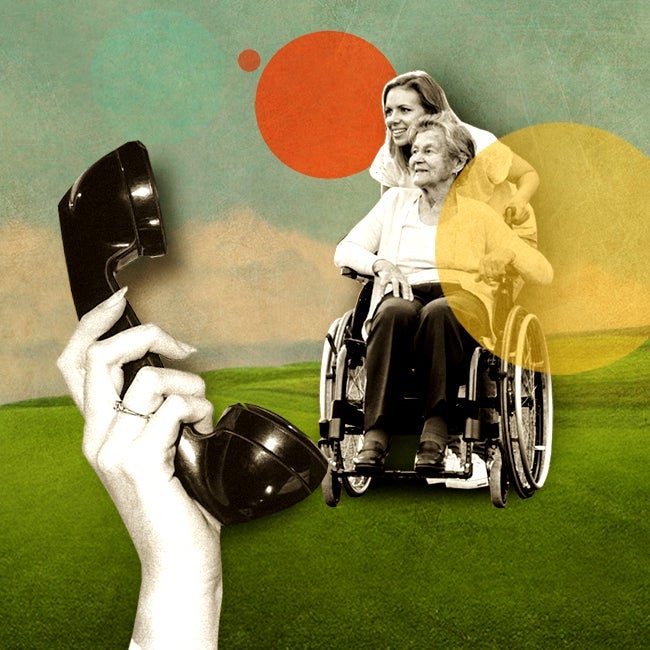 By July 1, nursing homes accounted for 14 percent of all COVID-19 cases and 45 percent of all deaths in the United States, according to data gathered by the Kaiser Family Foundation. Yet there’s been no federal accounting of this impact or of the continued vulnerability of America’s nursing homes to infectious-disease outbreaks.
By July 1, nursing homes accounted for 14 percent of all COVID-19 cases and 45 percent of all deaths in the United States, according to data gathered by the Kaiser Family Foundation. Yet there’s been no federal accounting of this impact or of the continued vulnerability of America’s nursing homes to infectious-disease outbreaks.
This summer, a team of researchers led by Barnett and Gillian SteelFisher, a senior research scientist in the Department of Health Policy and Management, began a survey study of these facilities. The researchers asked facility managers about COVID-19 infection rates, access to COVID-19 testing, PPE supplies, staffing levels, and financial stability as the pandemic drastically reduced the number of short-term, postoperative residents who account for the bulk of nursing home profits.
As the pandemic became a sustained feature in medical care, Barnett also trained his gaze closer to home. In his own practice, he has been pleasantly surprised by how much patient care can be done remotely. He and his colleagues now do routine consultations by phone or a virtual platform such as Zoom, though many patients are now feeling safe enough to visit their physicians in person.
Telemedicine is a lot less time-consuming, both for clinicians and for patients who no longer need to devote hours of their day to commuting to and from the doctor’s office. “It’s a level of interaction that’s entirely appropriate for a lot of different medical issues,” says Barnett, who plans to study how patients and care providers have adjusted to telehealth.
“The only reason why it wasn’t a core part of medical practice was because the payment policies hadn’t caught up to it,” he says. The pandemic changed all that, with most insurance companies now covering telehealth visits—which Barnett expects will remain a key piece of America’s health care delivery in the years ahead.
At the same time, Barnett acknowledges that in recent months people have simply skipped a lot of routine preventive care, including disease screenings, vaccinations, and chronic-disease management. Although much of his research has focused on the overuse of medical care, such as overprescribed pain medication fueling the opioid epidemic, he also worries about the lingering public health impacts of care avoidance during the pandemic.
“The repercussions are not clear yet, but I worry that this could take awhile for the health care system to correct,” he says, especially given the chronic underinvestment in public health and health care delivery research.
Barnett cited the Agency for Healthcare Research and Quality (AHRQ), whose annual operating budget of about $440 million was targeted for a 20 percent cut in the Trump administration’s FY2021 budget request. “How can we deliver health care effectively in the post-COVID-19 era? That is the work that AHRQ funds,” he explains. “I would hope that the current pandemic has made clear that there are few things more important to our nation’s safety and our well-being than having a healthy, active, easily mobilized research community that can answer these questions.
DESIGNING A RAPID TEST
PARDIS SABETI
In the battle against COVID-19, “collaboration is everything,” says Pardis Sabeti, professor of immunology and infectious diseases.
That collaboration starts with data sharing. On January 11, Chinese scientists published the genome for SARS-CoV-2, the virus that causes COVID-19. Sabeti’s team of research scientists, postdoctoral fellows, and students had been watching alerts about the virus since December. Now, they could act.
 Sabeti’s lab immediately started working on a COVID-19 diagnostic, tapping a long-standing partnership with West African researchers to help adapt simple-to-use tests they had co-developed with multiple labs in previous battles against Zika, Ebola, and Lassa fever.
Sabeti’s lab immediately started working on a COVID-19 diagnostic, tapping a long-standing partnership with West African researchers to help adapt simple-to-use tests they had co-developed with multiple labs in previous battles against Zika, Ebola, and Lassa fever.
The resulting test, called SHINE, uses gene-editing techniques to reveal the presence of COVID-19 infection in under an hour (several times faster than standard diagnostics). SHINE can diagnose a disease in a single step, using a smart-phone application to read the signal on a paper strip in a test tube.
Having a rapid test for widespread use by frontline health workers who lack access to the sophisticated DNA amplification known as PCR is a critical weapon against a pandemic, says Christian Happi, professor of molecular biology and genomics at Redeemer’s University in Nigeria and a visiting scientist at the Harvard Chan School. Happi helped lead a validation study of SHINE in June. “It’s a huge step forward,” he says.
Meanwhile, as COVID-19 cases have exploded across the United States, Sabeti’s team is working with hospitals, labs, and public health officials to continually sequence the virus’s genome from patient samples. They scour the genomic data for mutations to track the pandemic’s spread and to spot changes that might hobble current diagnostics.
So far, SARS-CoV-2 has not mutated rapidly, and most of the changes have little or no impact on virus function, notes Sabeti Lab member Bronwyn MacInnis, director of pathogen genomic surveillance at the Broad Institute and a visiting scientist at the School. Nevertheless, MacInnis says, these so-called silent mutations are full of information for researchers, who use the telltale genetic differences as a “fingerprint” that can help reveal the links between infections and superspreader events that led to major outbreaks.
The researchers are also on the lookout for any changes in the region of viral DNA targeted by most current diagnostics and for mutations that might alter how readily the virus spreads from person to person. For example, a mutation known as D614G is a slight alteration in the genetic recipe for the “spike proteins” on the surface of the virus and may improve their ability to unlock and infect host cells.
The potential for any single mutation to make the virus more contagious, more lethal, or more apt to throw diagnostics off the scent is low. But it’s a numbers game, says Daniel Park, group leader for viral computational genomics at the Broad Institute and a member of the Sabeti Lab. “When you have something that infects this many people, just the sheer size of the epidemic allows for those potentials for adaptation,” he explains. “If you let the virus throw the dice that many times, it might eventually come up with a winning number.”
The need to analyze a vast data trove, but with limited funding, is another impetus for researchers to share information and cooperate with one another. Through the end of August, a coalition including the Broad Institute, Massachusetts General Hospital, and the Massachusetts Department of Public Health had fully sequenced 778 virus genomes out of more than 119,000 confirmed COVID-19 cases in the state. Across the United States, about 20,600 virus genomes had been sequenced.
“It’s been a real struggle to get funding for this work. So we have to be scrappy,” says Sabeti, who stressed that much more openness and transparency were needed in general in the pandemic response. “Here in Massachusetts, there’s no dashboard that tells us all we need to know about who’s get-ting tested, who’s dying, what efforts are getting prioritize or support,” she says.
“We need a full accounting of what is happening in this outbreak.” Sabeti’s goal—which her team is pursuing with Happi in Nigeria, Senegal, Sierra Leone, and Liberia—is a pandemic early-warning system called Sentinel, in which health care workers trained and equipped with reliable diagnostics for a group of infectious diseases would share real-time disease-surveillance data on a cloud-based network, connecting them with researchers and public health authorities around the world.
Sabeti noted that the same tools of surveillance, testing, and data sharing that could help preempt future pandemics could also reduce the burden of illness and death that humans suffer every year with the seasonal flu. “It’s preparation that also yields immediate benefits,” she says. “There’s no excuse for not investing in it.”
DESIGNING HEALTHY BUILDINGS
JOSEPH ALLEN
Late in January, about a dozen ongoing research projects were on the agenda for the regular meeting of the Healthy Buildings Program at the Harvard Chan School. But the program’s director, Joseph Allen, associate professor of exposure assessment science, had become increasingly alarmed by reports of infections and deaths coming out of China. He put the entire agenda on hold, so the team could focus entirely on the emerging threat of COVID-19.
The Healthy Buildings team decided its first priority was to raise awareness about the critical role indoor spaces play in an epidemic. In op-eds for the Financial Times and the New York Times, Allen pointed out that buildings could either supercharge viral spread by sealing off fresh air or slow the contagion with proper ventilation and air filtering, in conjunction with personal actions such as wearing face masks.
Before joining the Harvard Chan School faculty, Allen had spent many years investigating buildings with toxic indoor environments—so-called sick buildings—that went up in the 1970s when the quest for energy efficiency came at the expense of fresh air. While scientists didn’t early this year know precisely how COVID-19 spread, Allen’s forensic and remediation work taught him that policymakers need to make decisions using the best information available.
By May, as states gradually lifted stay-at-home orders and allowed workplaces to reopen, Allen partnered with John Macomber, a senior lecturer at Harvard Business School, on an article in Harvard Business Review that made the case for using “the hierarchy of controls” as a framework for reopening buildings, such as allowing some employees to work from home when possible, thinning out the in-office staff through staggered schedules, and engineering fixes such as pumping more outside air into a building’s heating, ventilation, and air conditioning (HVAC) system (or opening windows) and upgrading to high-efficiency air filters.
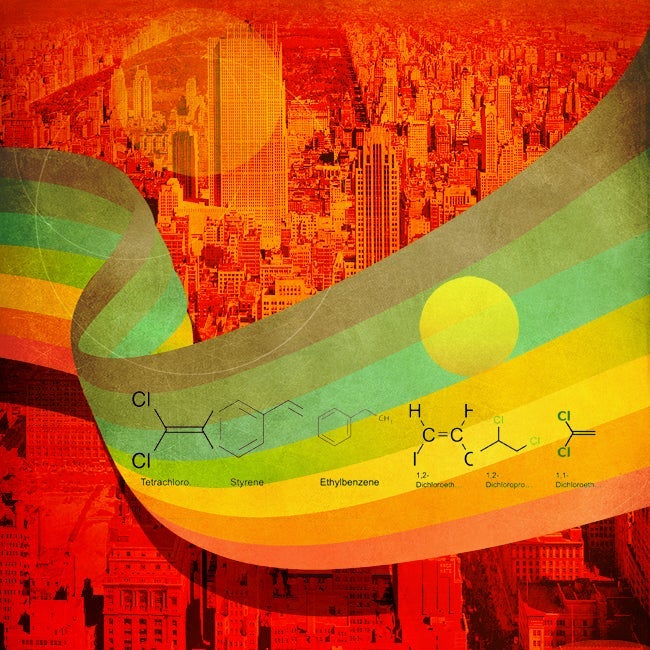 Allen’s Healthy Buildings group also joined with the Harvard Chan School’s Center for Communicable Disease Dynamics to create COVID-19 Path Forward: A Plan for Saving Lives and Our Economy, an online compilation of research and best practices in 14 priority areas, such as wide-scale viral testing, protecting high-risk populations, physical distancing, and vaccine research.
Allen’s Healthy Buildings group also joined with the Harvard Chan School’s Center for Communicable Disease Dynamics to create COVID-19 Path Forward: A Plan for Saving Lives and Our Economy, an online compilation of research and best practices in 14 priority areas, such as wide-scale viral testing, protecting high-risk populations, physical distancing, and vaccine research.
In addition, Allen and a team of researchers led by postdoctoral fellow Parham Azimi modeled the spread of COVID-19 through the Diamond Princess cruise ship, on which more than 700 of the 3,711 passengers and crew were infected in January and February 2020. Among the preliminary results now under peer review: Tiny aerosol droplets were the main means of transmission, accounting for 41 percent of the infections, compared with 36 percent for large droplets (the means by which many epidemiologists believed COVID-19 is spread), and 21 percent for fomite transmission, in which people touch their mouth, nose, or eyes after touching a contaminated object or surface. “Our interest is not just to understand the dynamics on the cruise ship,” says Allen, “but to develop a model of risk and exposure that you can apply to any indoor environment.”
Allen is consulting with leaders at hospitals, senior care centers, community shelters, universities, courts, prisons, media companies, and theaters about safely operating during the pandemic. He notes that many of these conversations go beyond the current crisis into more long-standing strategies for healthier buildings, such as incorporating nature into interior design, reducing noise, and using materials that don’t emit volatile organic compounds.
“We know there’s a better way forward. We know there are holistic, healthy building strategies,” says Allen, who co-authored the book Healthy Buildings: How Indoor Spaces Drive Performance and Productivity with Harvard Business School’s John Macomber. The book was published in April 2020.
Allen hopes the pandemic will bring a “collective mindset shift” toward a focus on health. “It reminds me of post 9/11, which ushered in a 20-year era focused on national security,” he says. “I think we’re about to be ushered into the era of health security, where everything we do will be health-focused.”
IT REMINDS ME OF POST 9/11, WHICH USHERED IN A 20-YEAR ERA FOCUSED ON NATIONAL SECURITY. I THINK WE’RE ABOUT TO BE USHERED INTO THE ERA OF HEALTH SECURITY, WHERE EVERYTHING WE DO WILL BE HEALTH-FOCUSED.”—JOSEPH ALLEN, ASSISTANT PROFESSOR OF EXPOSURE ASSESSMENT SCIENCE
MENDING THE SAFETY NET
BENJAMIN SOMMERS
In early March—just weeks after COVID-19 cases began appearing in the United States—Ben Sommers’ primary care practice at Boston’s Brigham and Women’s Hospital was shifting most appointments to telehealth, mailing out hundreds of home blood-pressure cuffs, scrambling clinician schedules, and preparing for an influx of coronavirus testing requests.
 Sommers, a professor of health policy and economics in the Department of Health Policy and Management, soon realized the pandemic wouldn’t just change his clinical work; it would also consume his research into America’s health safety net. The nation’s frayed health care system would now face an almost unprecedented challenge: Millions of people were losing their jobs and health insurance, hospitals were inundated, and infection fears were disrupting routine doctor visits for the screenings, checkups, and chronic-disease management that are critical to public health.
Sommers, a professor of health policy and economics in the Department of Health Policy and Management, soon realized the pandemic wouldn’t just change his clinical work; it would also consume his research into America’s health safety net. The nation’s frayed health care system would now face an almost unprecedented challenge: Millions of people were losing their jobs and health insurance, hospitals were inundated, and infection fears were disrupting routine doctor visits for the screenings, checkups, and chronic-disease management that are critical to public health.
At the time, Sommers and colleagues were wrapping up a study showing that the 36 states that expanded Medicaid eligibility in recent years had done so without additional state spending, thanks to federal matching dollars offered by the Affordable Care Act. But well before that study was published in the New England Journal of Medicine in June, Sommers had realized that Medicaid expansion decisions would have a major impact on states as the pandemic raced across the country. “We really needed to start asking, what is this going to mean in the era of a pandemic and a likely recession?” he says.
Federal Medicaid dollars are a lifeline for states in a budgetary bind and for medical facilities dealing with more long-term intensive care without the usual revenues from elective surgeries. Sommers is planning a study this fall with two department colleagues—Assistant Professor Jose Figueroa and Department Chair Arnold Epstein—to see whether a state’s decision to expand Medicaid affects the toll of the pandemic and the resulting recession on African Americans and Latinos, who have suffered disproportionately high rates of infections and death from the virus.
In another research collaboration with Figueroa, along with researchers at Boston’s Beth Israel Deaconess Medical Center, Sommers is scouring Massachusetts’ COVID-19 statistics to see what’s driving the disparities in disease impact and what policy levers might be used to close them. The researchers have found links between the pandemic’s spread and household crowding, as well as immigration status. “Noncitizens are more likely to have jobs in food service, cleaning, and other jobs where they can’t telecom-mute,” says Sommers. “They still have to be out, using mass transit, and exposing themselves to more risk.”
Considering the pandemic’s broader impacts on public health, Sommers hopes the crisis will stem the nation’s long-term erosion of trust in expertise, science, and evi-dence as a backbone for policy decisions and public opinion. “I think people’s willingness to discard scientific evidence often wanes the closer the threat gets to them,” he says.
Still, he knows from his clinical practice that ideology isn’t the only barrier to following medical advice. Many of his low-income patients who probably have COVID-19 but are only mildly symptomatic agonize over his advice to self-quarantine for two weeks, because they would miss too much work. “For a doctor to tell somebody who feels a little under the weather, who maybe has a cough and a low-grade fever, ‘Well, you can’t feed your kids this week’ is not a reasonable argument,” says Sommers, who co-authored a recent article in JAMA Health Forum about the need for Congress to fund more paid sick leave.
“This is an area where I think the pandemic should be a catalyst for us thinking harder about the interaction of economics and health,” he says. “When people are sick, we don’t want them to work, but we need to make that a financially viable decision.”
CONNECTING AIR POLLUTION TO COVID-19 DEATHS
FRANCESCA DOMINICI
In the first days of lockdowns this spring, Francesca Dominici, the Clarence James Gamble Professor of Biostatistics, Population, and Data Science, was stuck at home watching the calamity of disease and death unfold around the world, wondering what she could do to fight it. “I felt this strong need to try and help,” she recalls. But how? “It’s not really my area. I’m not an infectious-disease expert.”
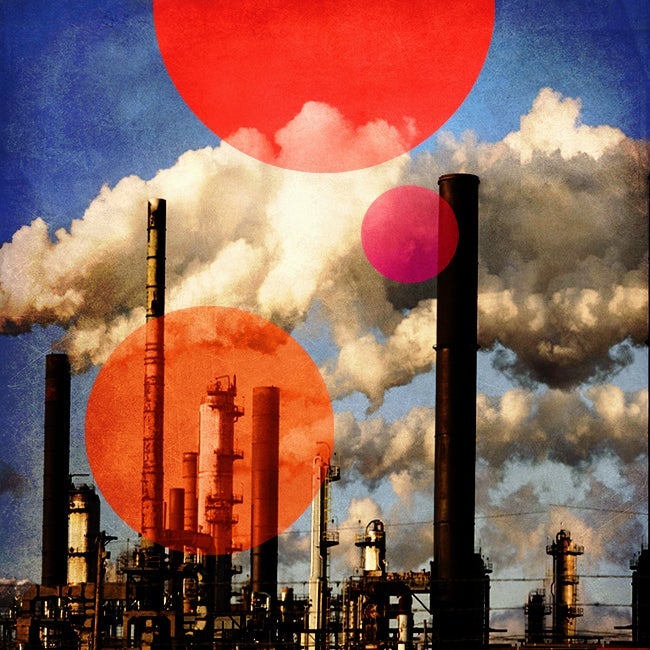 The answer came from tiny particles of pollution and a mountain of data. Specifically, Dominici, who also serves as co-director of Harvard’s Data Science Initiative, had co-authored a 2019 study that found a link between levels of fine particulate air pollution, known as PM2.5, and hospitalizations for acute respiratory distress syndrome—one of the main lethal complications in COVID-19 patients.
The answer came from tiny particles of pollution and a mountain of data. Specifically, Dominici, who also serves as co-director of Harvard’s Data Science Initiative, had co-authored a 2019 study that found a link between levels of fine particulate air pollution, known as PM2.5, and hospitalizations for acute respiratory distress syndrome—one of the main lethal complications in COVID-19 patients.
“We were sitting on an enormous amount of data,” says Dominici—data that included particulate counts for every square kilometer of the continental United States and ZIP code–level tabulations of hospitalizations, socioeconomic status, smoking rates, body mass indexes, and mortality figures for some 60 million people enrolled in Medicare for the past two decades.
Dominici analyzed this data along with the county-level reports of COVID-19 deaths. The initial results, now under peer review, showed that people were 8 percent more likely to die from COVID-19 if they lived in an area with slightly elevated levels of fine particulate pollution—just one more microgram per cubic meter of air—compared with another county with otherwise similar demographics. As the pandemic has evolved and county death totals have risen, Dominici’s team has been frequently rerunning the analysis (daily throughout most of April and about every week thereafter). “So far, the results are very stable,” she says.
But because the findings had not yet been peer-reviewed, they were not considered by the U.S. Environmental Protection Agency before its April decision not to tighten regulations on allowable fine particulate concentrations in industrial soot. For Dominici, this unfortunate timing highlights the conundrum faced by public health researcher trying to contribute solid science during a pandemic response. “It’s a very tricky balance and a very stressful one,” she says. “The sense of urgency and the high level of crisis is against the principles of a scientist. We study. We go slow.” In the meantime, her research team made their data and the code they used to analyze it publicly available, which sparked several more studies around the globe linking air pollution and COVID-19 mortality.
In a further project, a working group of Harvard students and postdoctoral fellows Dominici leads has started examining fluctuations in different types of air pollution during state shutdowns, which have varied widely. Drastic traffic reductions in cities have brought big declines in nitrogen dioxide, for example, but not much of a reduction in fine particulates. “This tells us that if you live in a city that has a PM2.5 problem,” says Dominici, “shutting down traffic in that city is not going to help. You need to target power plants, which are major producers of these tiny particles.”
Dominici believes that the urgency of a pandemic makes it critical for scientists to share their data, both for speedy replication and for refining the research. Doing so unleashes the potential of public health experts to influence policy in a timely and targeted way. “The power of data allows us to act,” she says. “It’s not enough to write a paper—especially during a fast-moving crisis like today’s coronavirus pandemic.”
—Chris Berdik is a Boston-based science journalist
